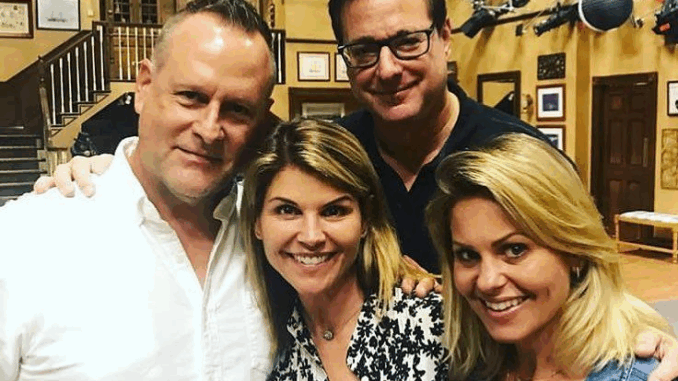
1. The Nostalgia Trap
When Netflix announced Fuller House, fans of Full House—the wholesome, laugh-track-filled sitcom from the late ’80s and early ’90s—were ready to dive back into the Tanner household. We were promised the same heartwarming comedy, family bonds, and life lessons that made the original a cultural phenomenon. But here’s the problem: nostalgia is tricky. It can make us long for the past, but it also sets the bar unrealistically high.
2. A Formula That Felt Too Forced
The magic of Full House was in its organic, even slightly cheesy charm. In Fuller House, the jokes felt over-engineered, as if the writers were checking boxes on a “fan service” list rather than creating genuine moments. What used to feel natural now came off as manufactured.
3. Recycled Storylines Instead of Fresh Plots
Rather than pushing the story forward, Fuller House leaned heavily on recycled gags and predictable plotlines. Stephanie having a similar “wild child” arc? Kimmy’s quirky antics dialed up to cartoonish extremes? D.J. suddenly in a love triangle that mirrored Danny’s dating struggles? It all felt like déjà vu—but without the charm.
4. Over-Reliance on Cameos
Sure, seeing John Stamos, Bob Saget, and Dave Coulier pop in was fun—at first. But Fuller House used these cameos as crutches. Instead of letting the new generation shine, the show leaned on the old cast to grab attention.
5. Characters Turned Into Caricatures
In Full House, Kimmy Gibbler was eccentric but lovable. In Fuller House, she became almost unrecognizable—a punchline rather than a person. Stephanie’s free spirit transformed into a stereotype. Even D.J., once relatable, felt like a Hallmark character who’d wandered into a sitcom.
6. The Over-Polished Netflix Look
The original had that warm, slightly dated feel that matched its era. Fuller House was too glossy—perfect lighting, immaculate sets, and hyper-styled wardrobes made it feel more like a parody of itself than a continuation.
7. Humor That Missed the Mark
Full House humor was family-friendly without trying too hard. Fuller House often went for cheap laughs or awkwardly modern pop-culture references that will age faster than a glass of milk in the sun.
8. Too Much Fan Service, Not Enough Story
There’s a fine line between nodding to your roots and drowning in them. Fuller House spent so much energy winking at the audience—catchphrases, recycled punchlines, recreated scenes—that it forgot to give us compelling new stories.
9. An Identity Crisis
Was Fuller House meant for the kids of today or the grown-up fans of the ’90s? It tried to be both—and ended up being neither. The tone wavered between kid-friendly slapstick and adult relationship drama, never fully committing to either lane.
10. The Missing Olsen Twins Factor
Michelle Tanner’s absence was the elephant in the room. The constant meta-jokes about the Olsen twins not returning were cute at first but quickly became tiresome reminders of a gap that could never be filled.
11. Dialogue That Didn’t Flow
In the original, conversations felt like conversations. In Fuller House, they often felt like setups for the next gag, giving scenes an unnatural rhythm. It made emotional moments feel scripted instead of heartfelt.
12. Emotional Beats That Didn’t Land
Full House knew how to balance humor with genuine heart. In Fuller House, attempts at emotional moments often felt rushed or shallow—like they were checking a “sentimental scene” box rather than letting moments breathe.
13. The Wrong Kind of Modernization
Updating a ’90s sitcom for today could have been brilliant. Instead, the modernization felt superficial—throwing in smartphones, hashtags, and awkward slang without truly adapting the storytelling to the times.
14. Pacing Problems
Episodes often felt bloated, as if they were trying to cram too many callbacks and subplots into 30 minutes. Scenes dragged, jokes lingered too long, and cliffhangers felt forced.
15. The Legacy Effect—And Why It Hurts
The original Full House was far from perfect, but it had a sincerity that’s hard to fake. Fuller House unintentionally highlighted how delicate that magic was—and how easily it can be lost. Instead of enriching the legacy, it made many fans realize maybe some things are better left untouched.
Conclusion
Fuller House had all the pieces for a triumphant return—beloved characters, a built-in audience, and the backing of Netflix. But instead of breathing new life into a classic, it doubled down on nostalgia without giving us something truly fresh. In doing so, it chipped away at the charm of the original and left many fans feeling that sometimes, the best way to honor a show… is to leave it in the past.
FAQs
1. Was Fuller House successful despite fan criticism?
Yes, it ran for five seasons on Netflix and had strong viewership in its early seasons, driven mostly by nostalgia.
2. Did all the original cast return?
Most did, except Mary-Kate and Ashley Olsen, who declined to reprise Michelle Tanner.
3. Are there any standout episodes in Fuller House worth watching?
Yes, a few episodes in later seasons deliver heartfelt moments, especially those focusing on Stephanie’s fertility journey.
4. Why did Netflix end Fuller House?
It was reportedly due to declining viewership and the high cost of production relative to its ratings.
5. Could there ever be another Full House reboot?
It’s possible, but after Fuller House’s mixed reception, networks may be cautious about revisiting it again soon.
